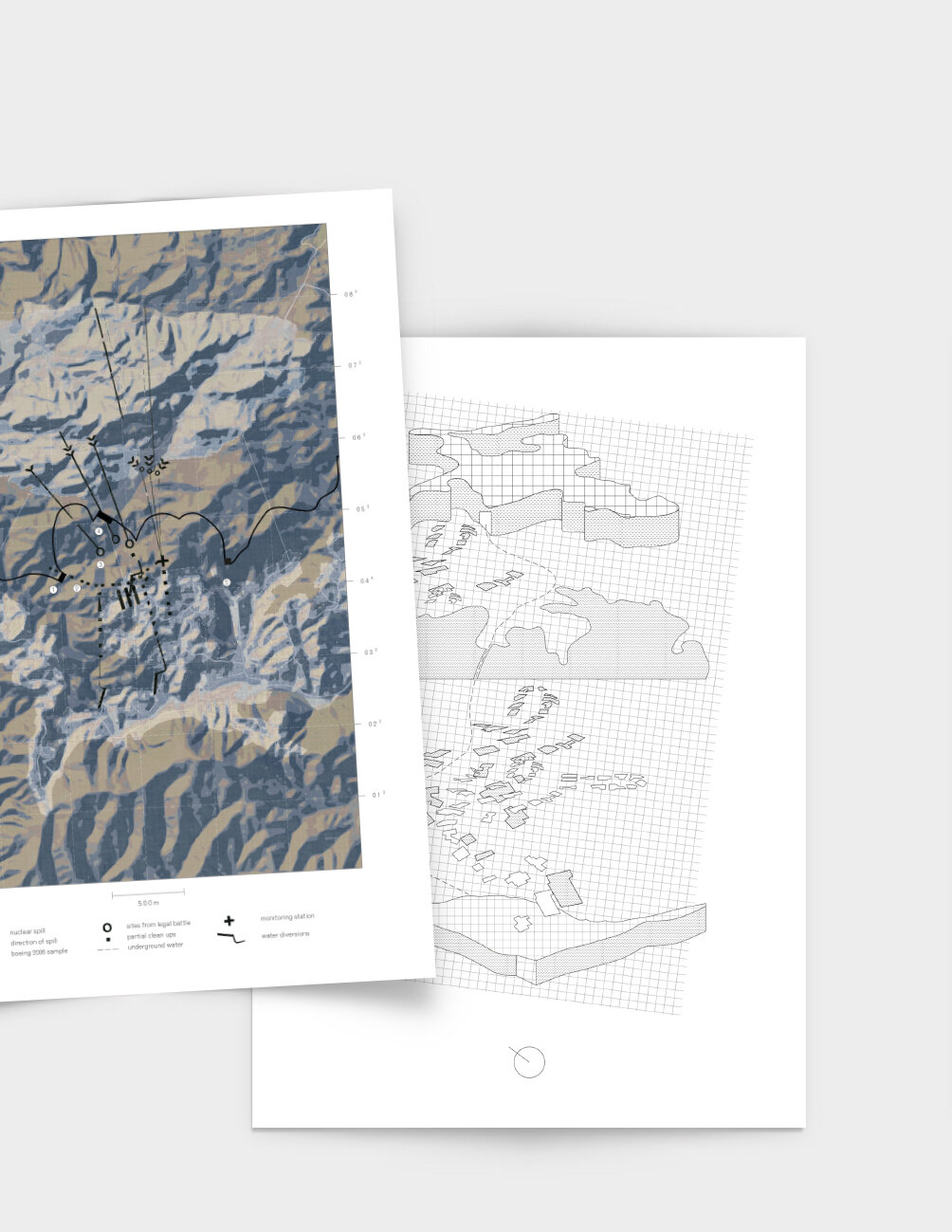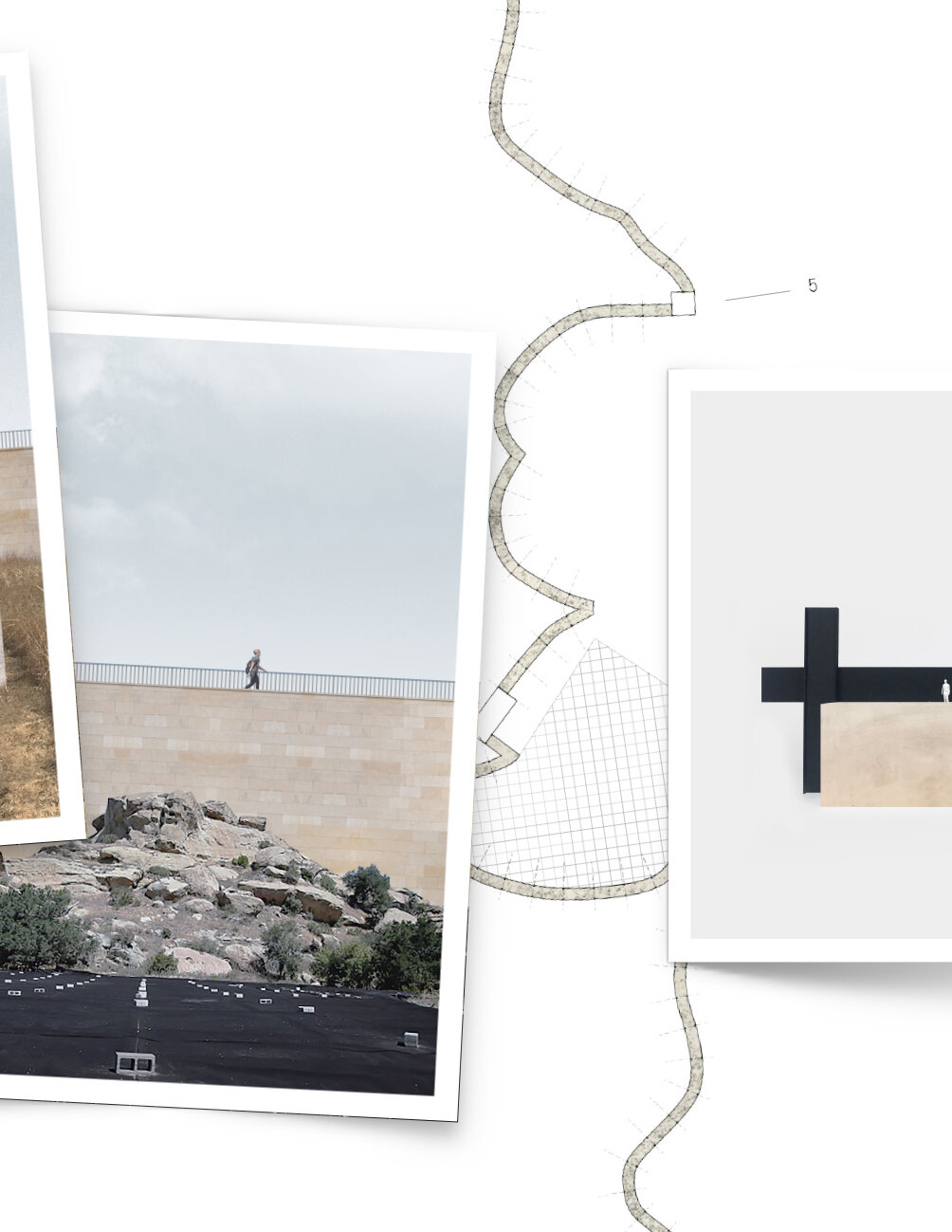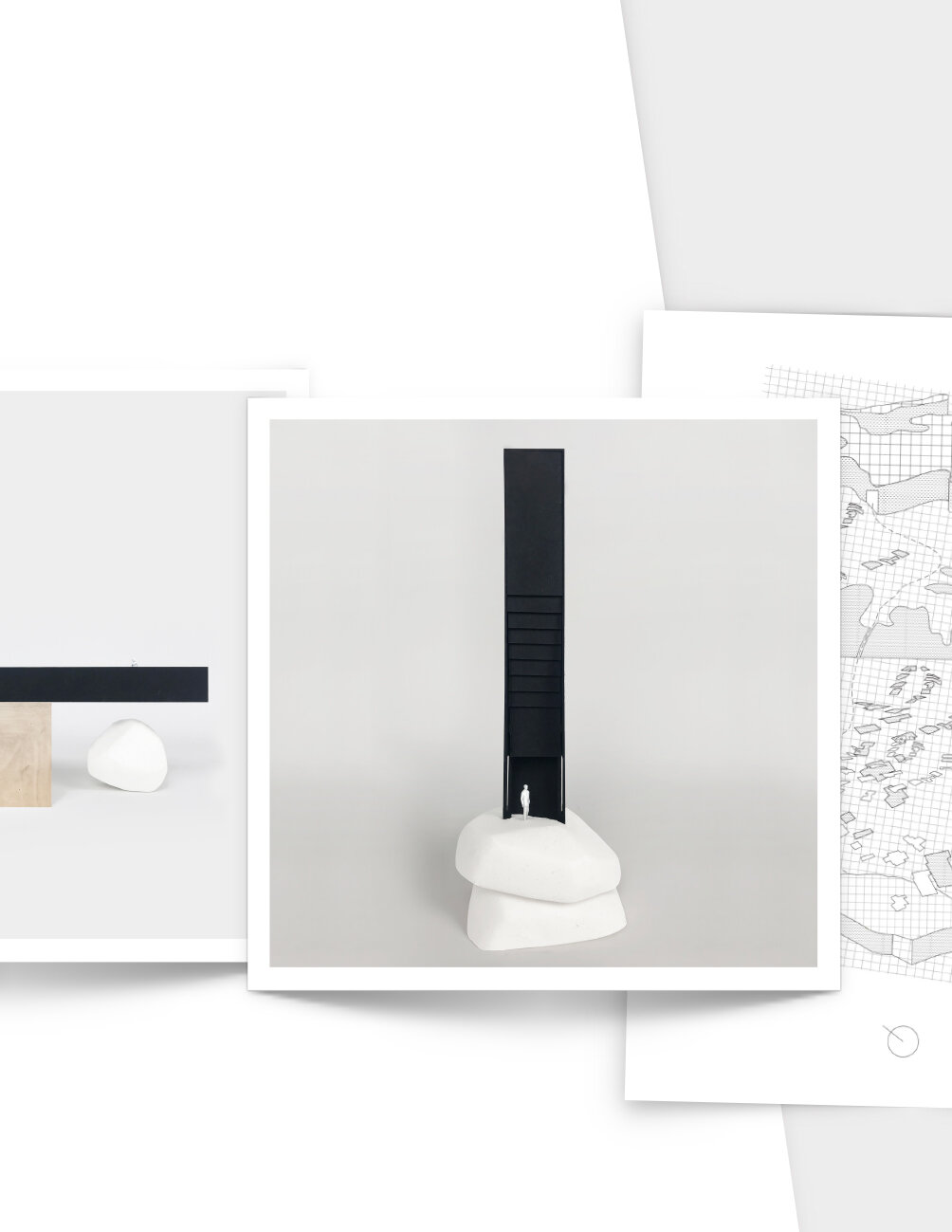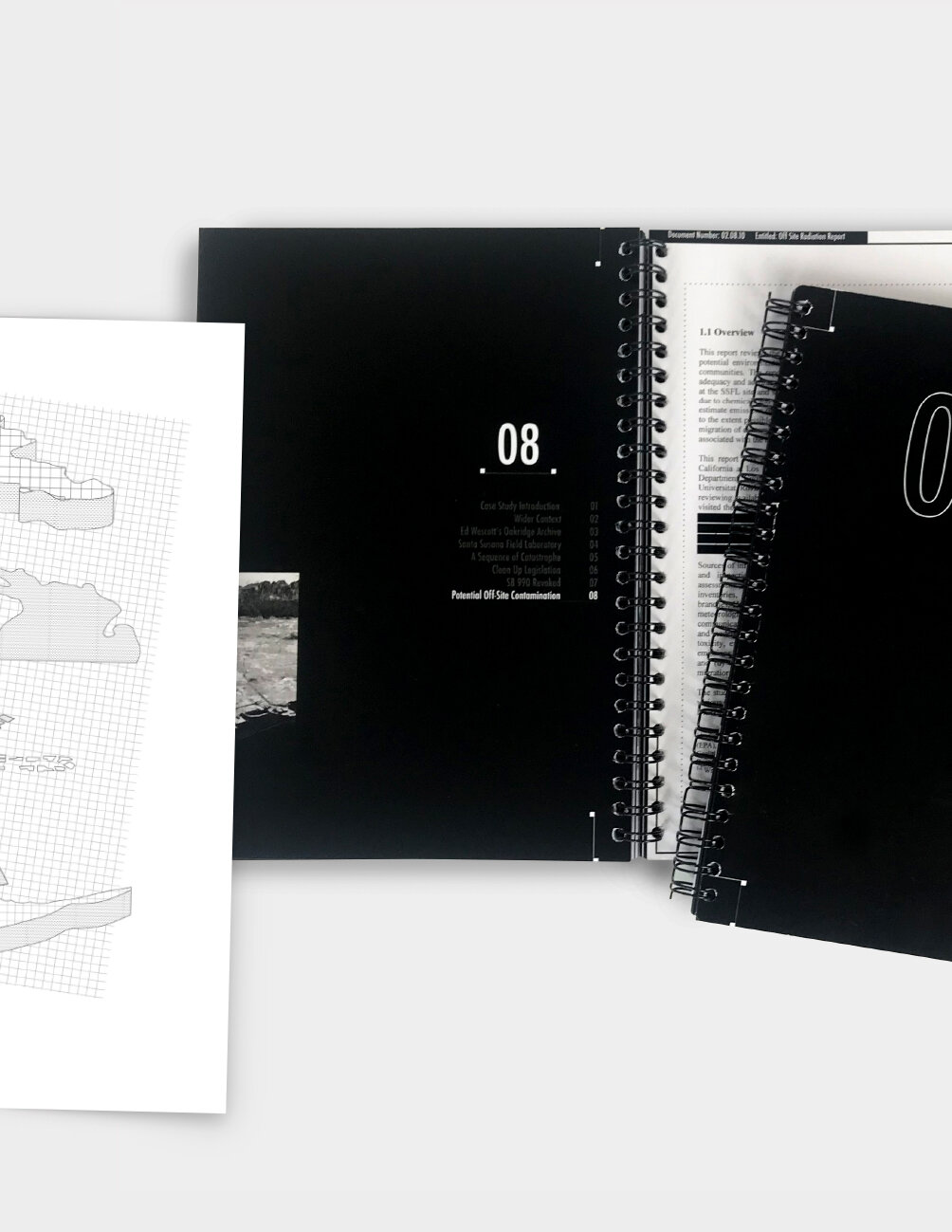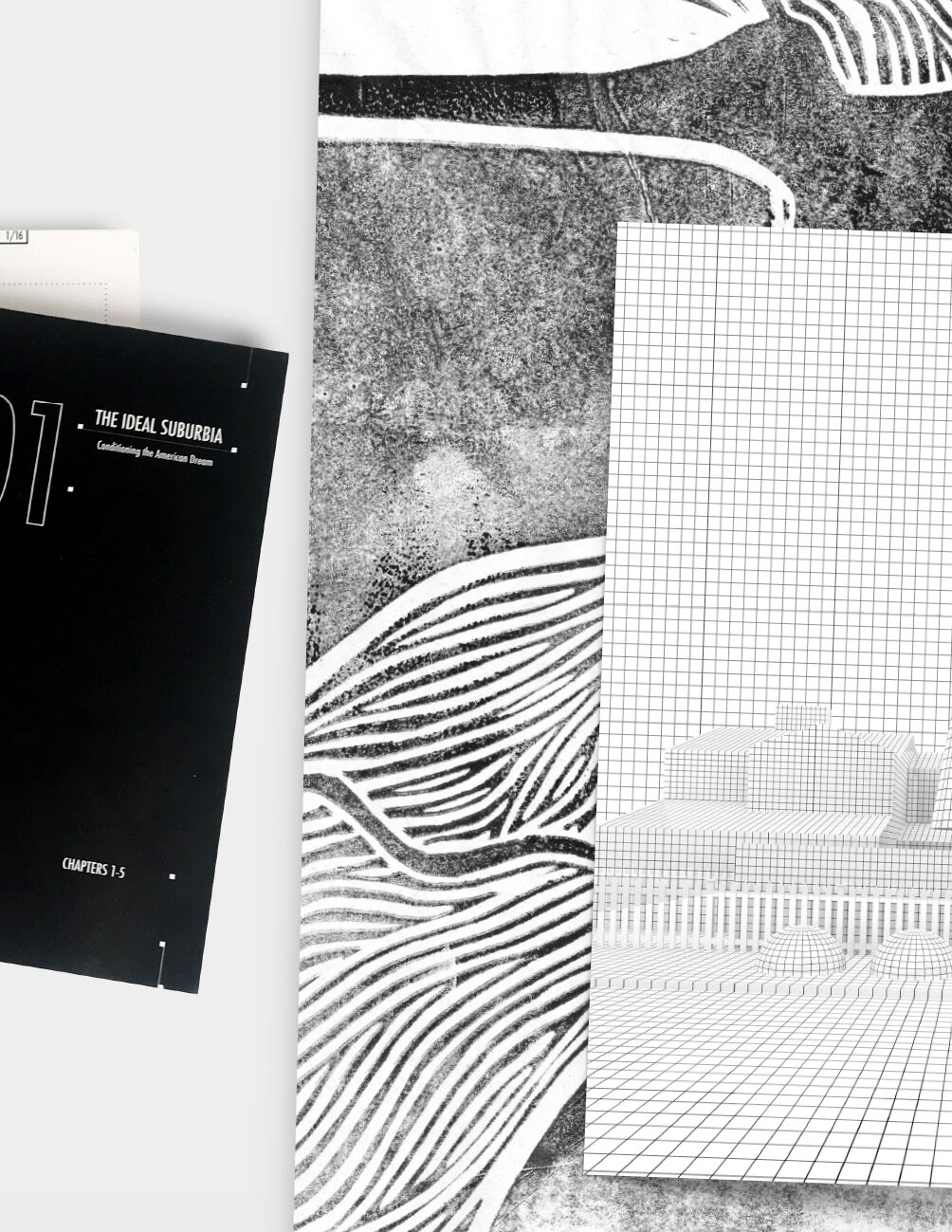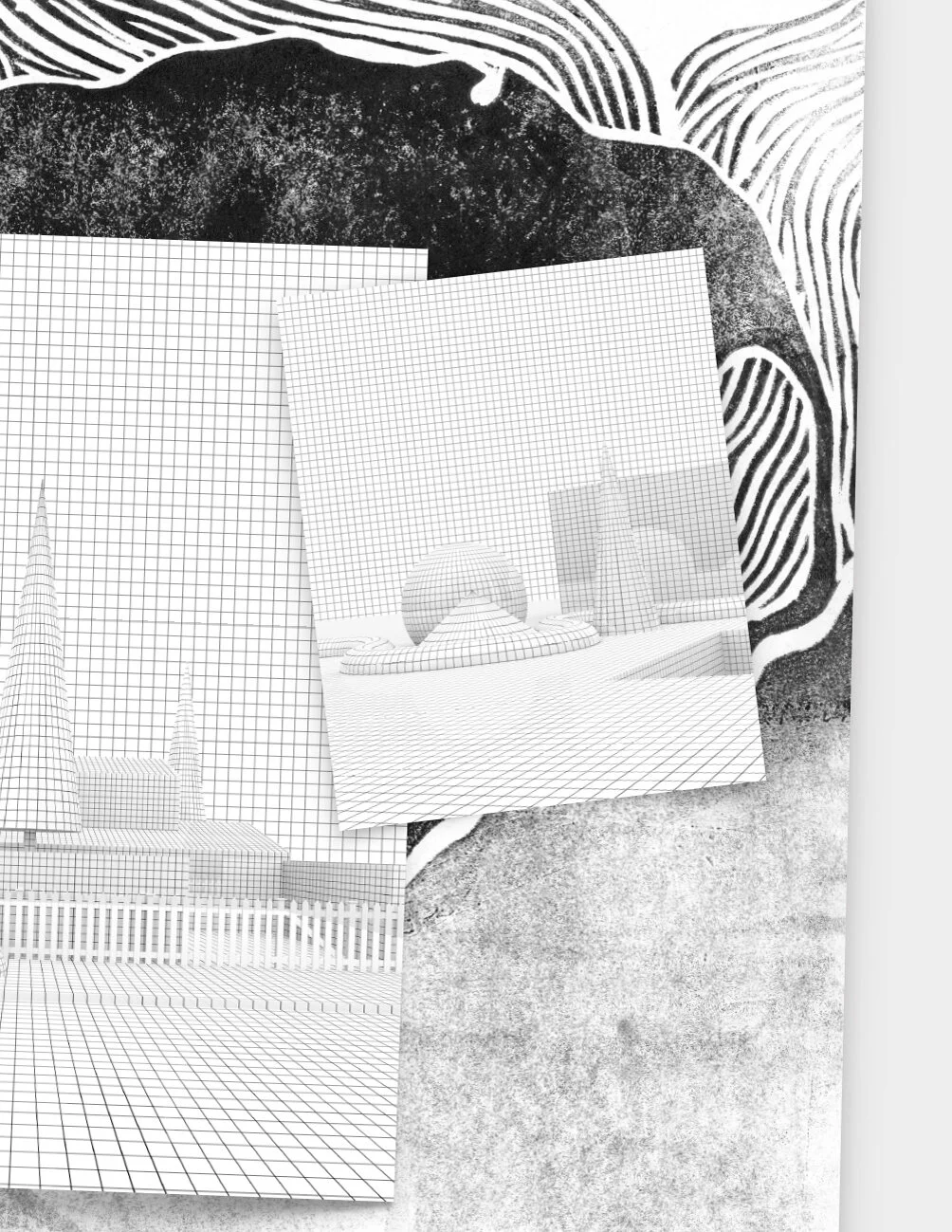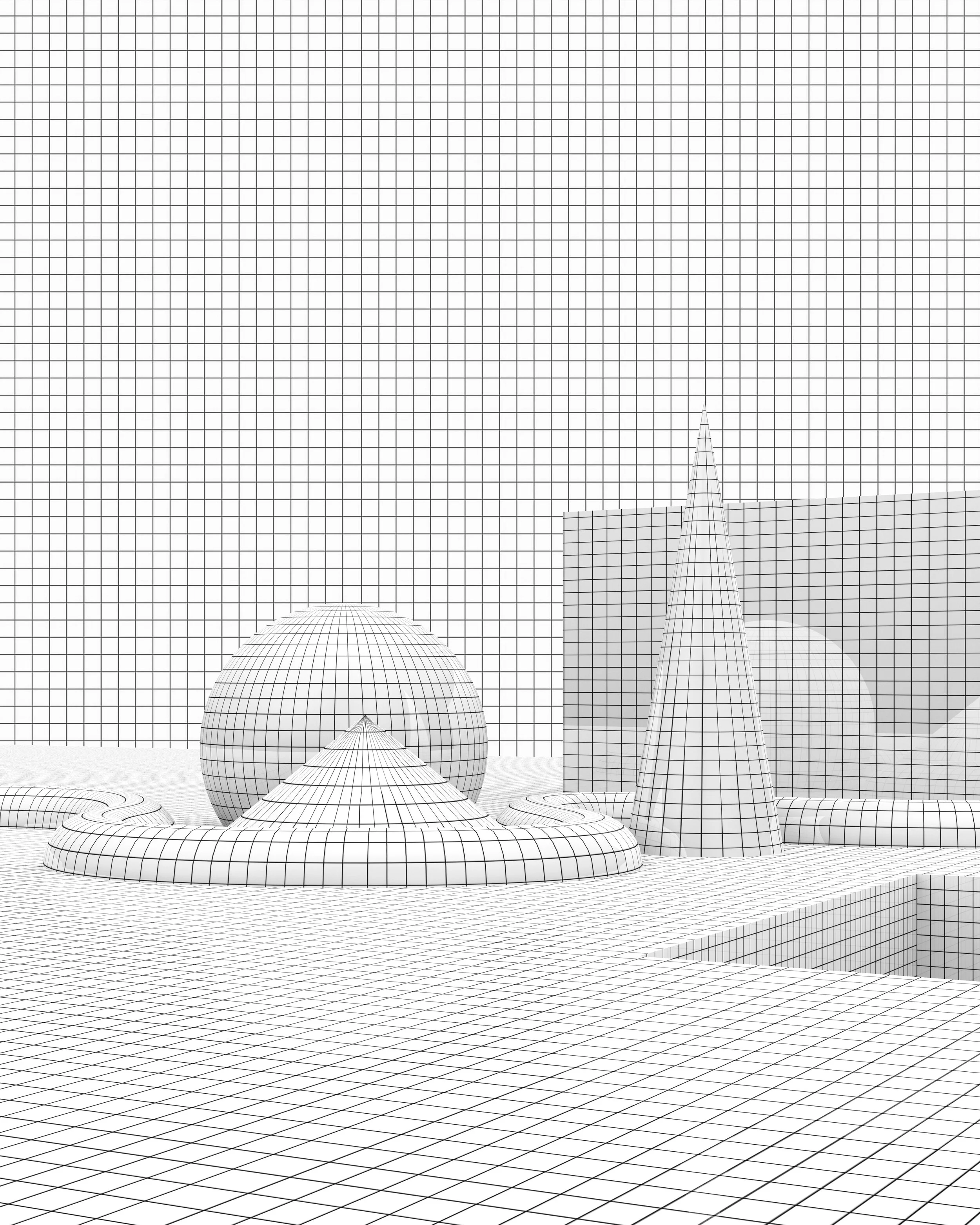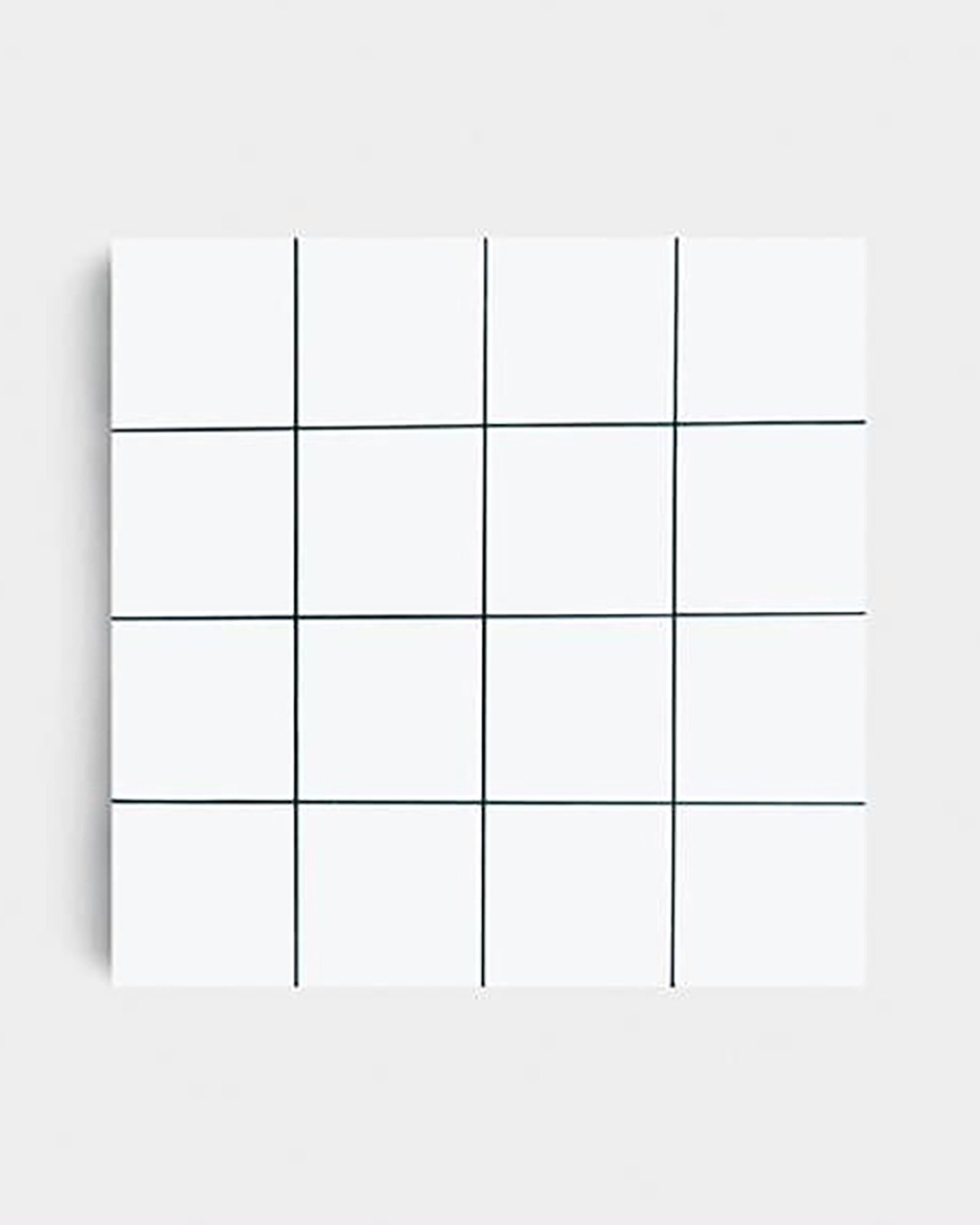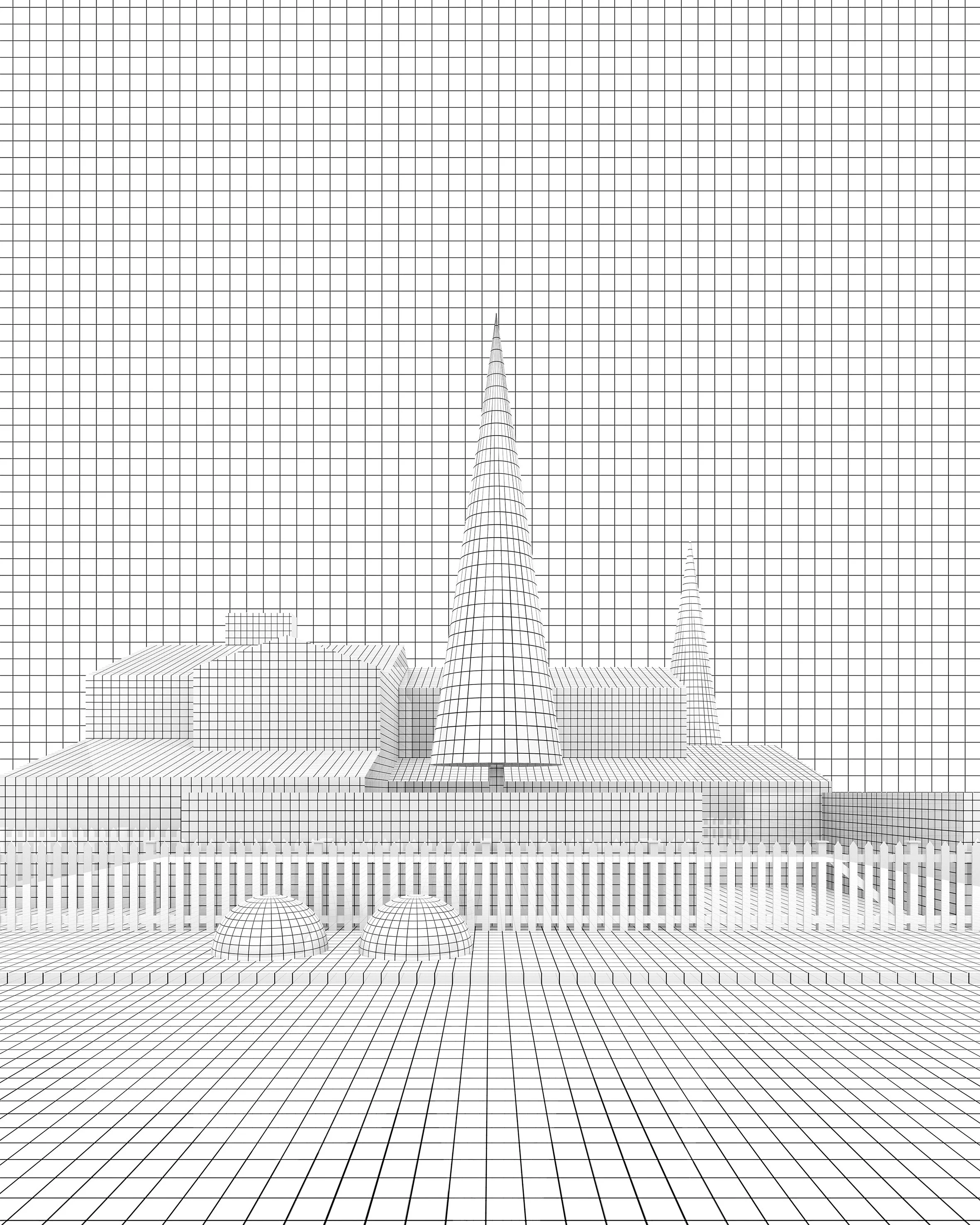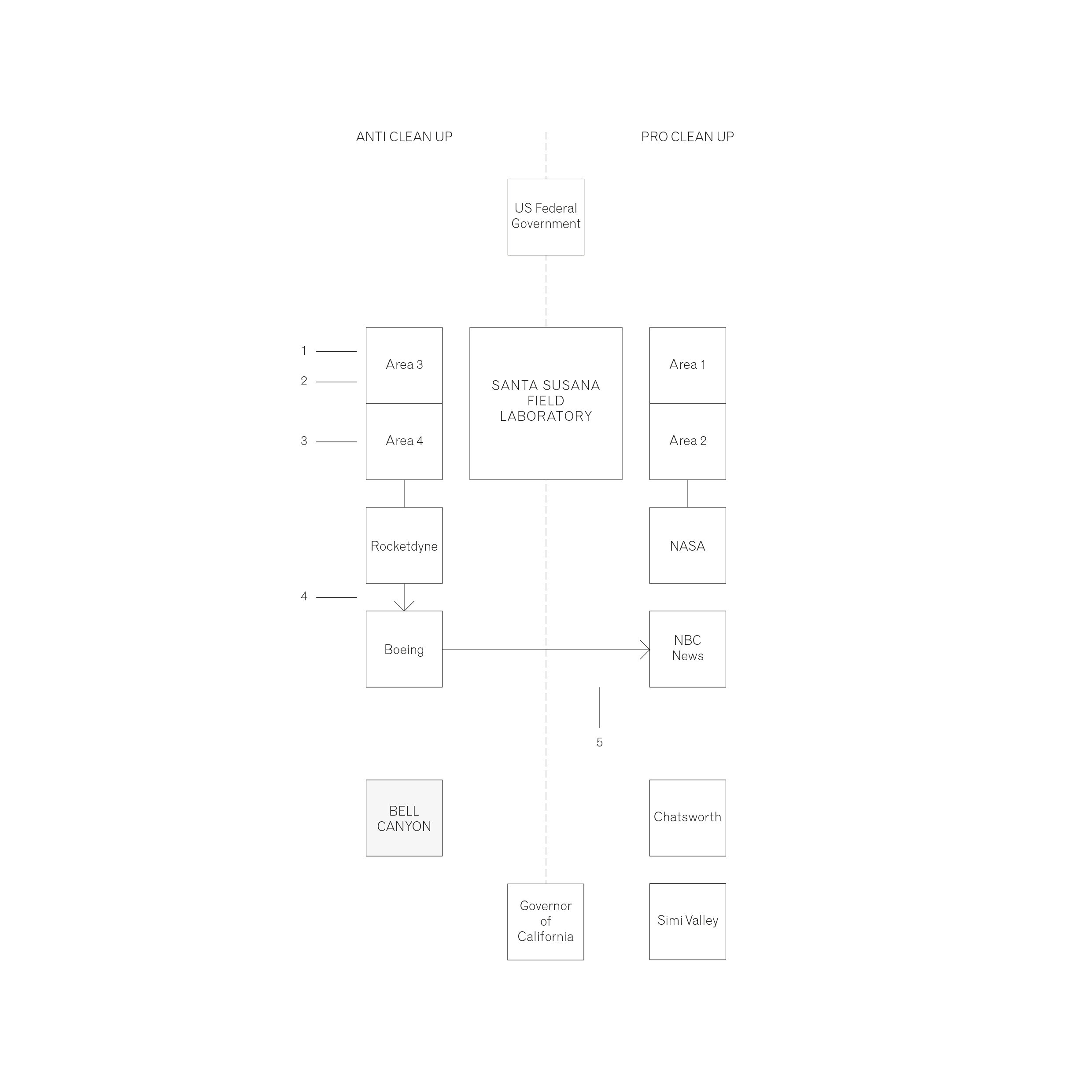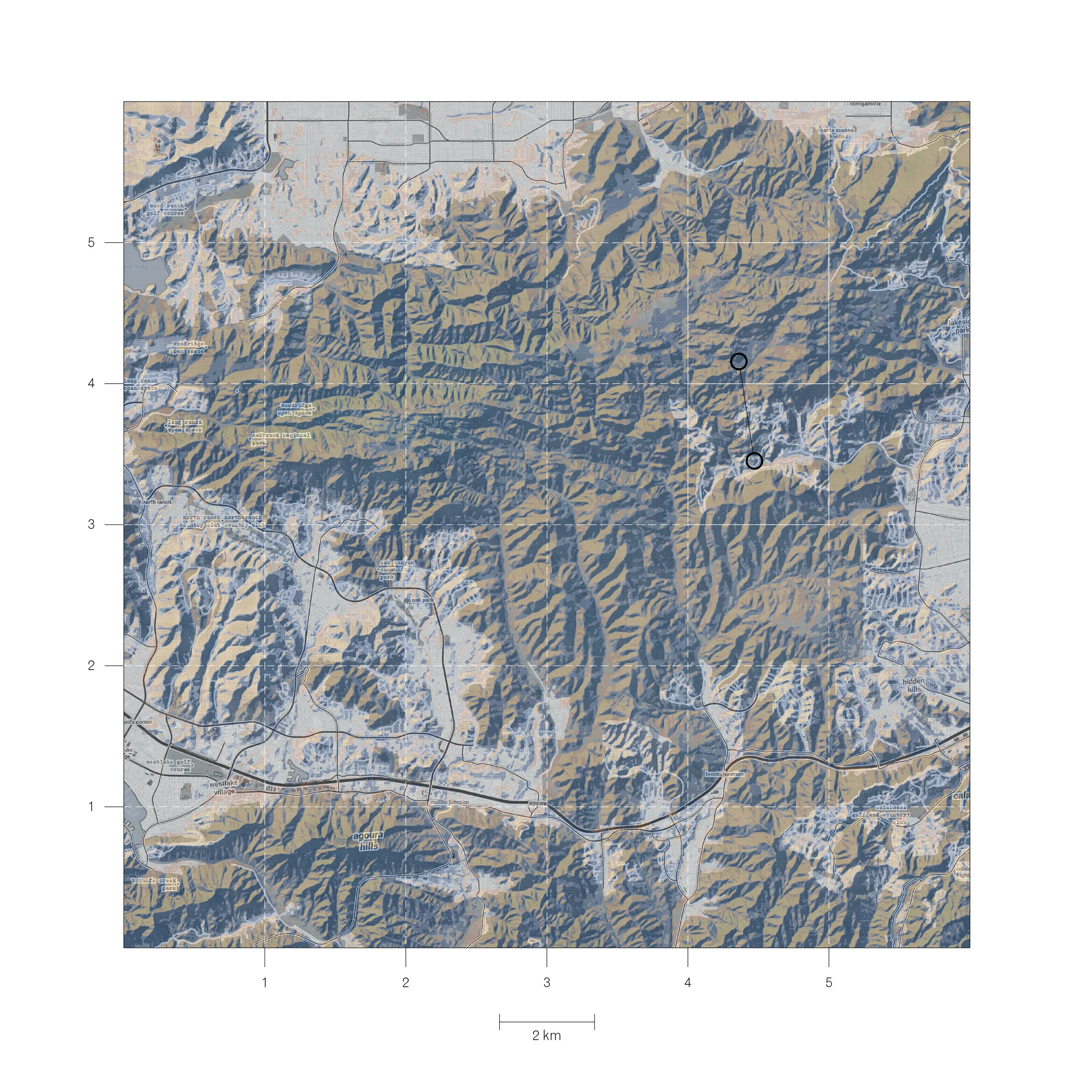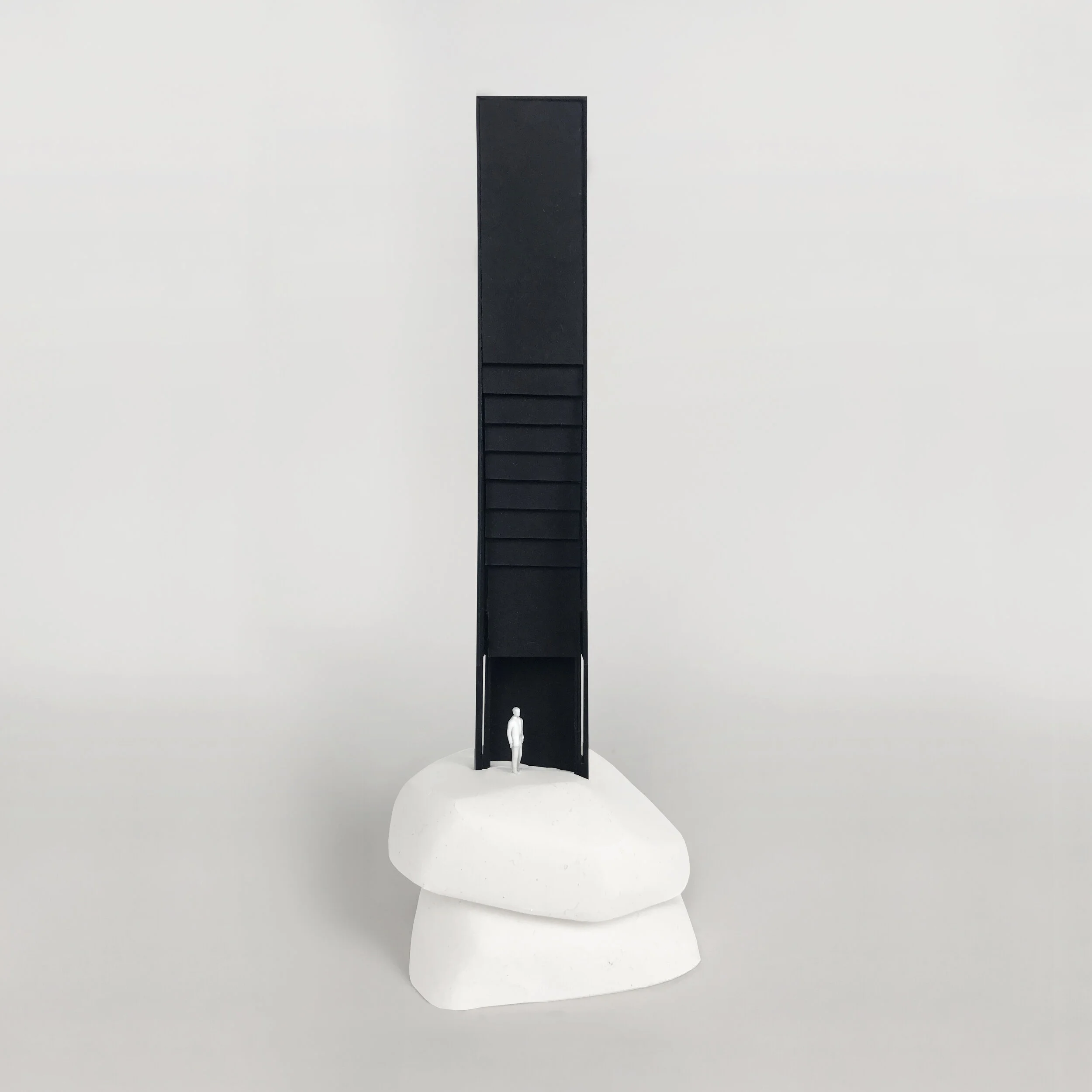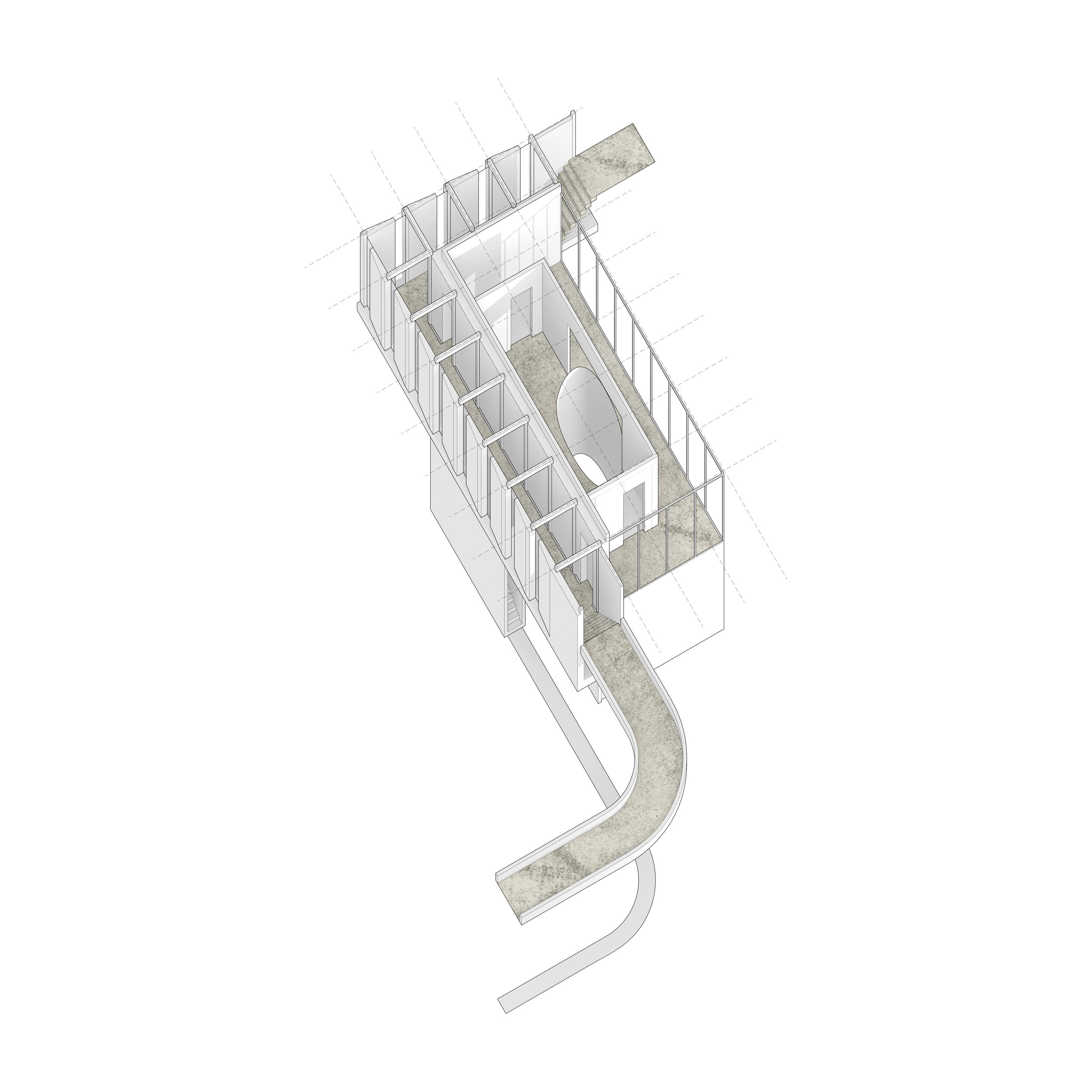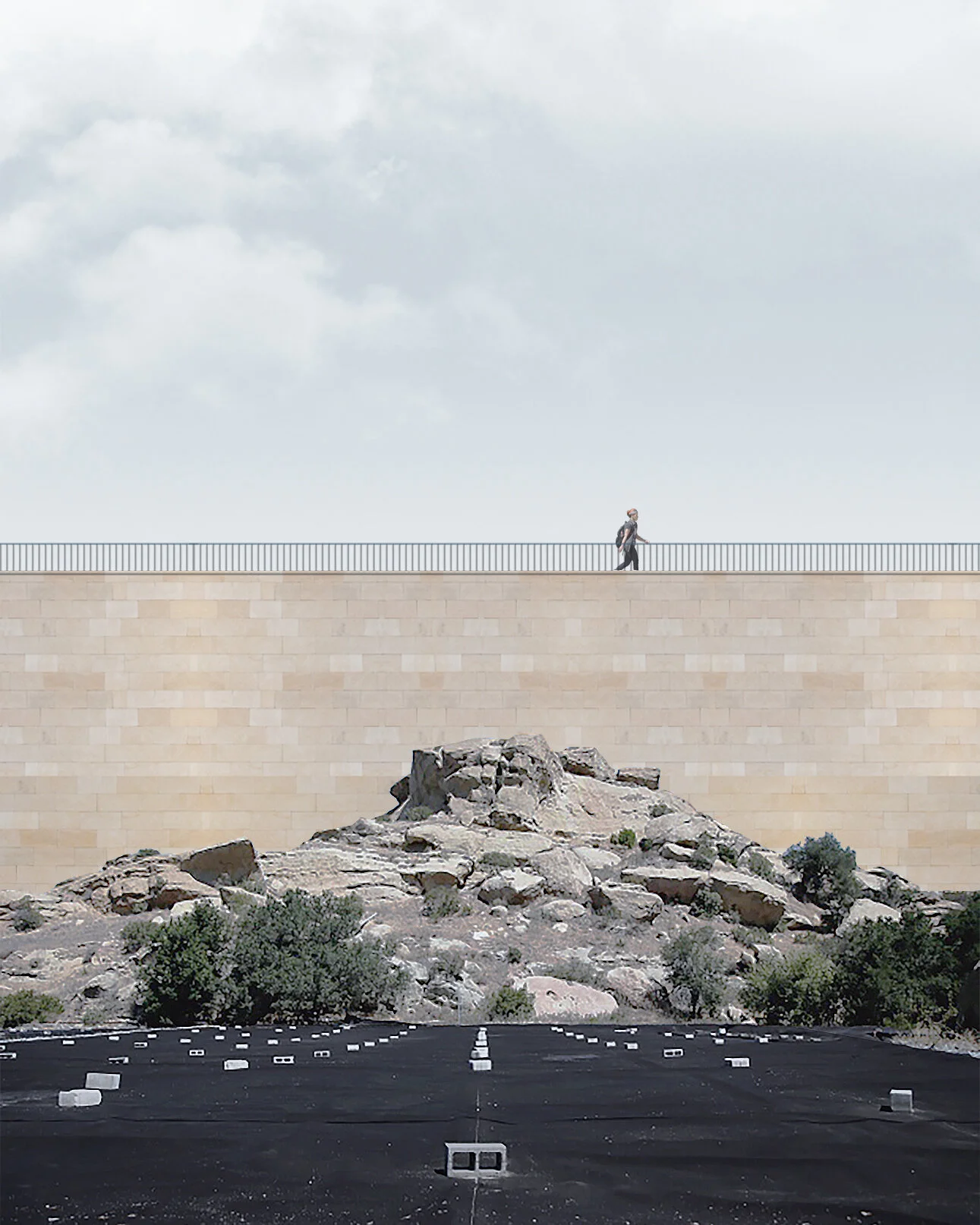TOXIC SUBURBIA
(Winner of the RIBA West London Student Award 2016)
ADS 7 - Godofredo Pereira, Platon Issaias & David Burns
Toxic Suburbia is the Part 1 of a year investigation into the American Grid. It explores a community on the outskirts of Los Angeles- a perfect example of the American suburb fit with cul-de-sacs and picket fences. However, nearby lies Santa Susana Field Laboratory, a decommissioned nuclear testing facility from the Cold War. During its tenure, the site suffered a number of contamination spills that remained confidential until recently the classification expired. This has left the affluent community of Bell Canyon facing the very real issue of an emerging radiation fallout on their doorstep. Now fully understood for what it was, the site has undergone a number of different partial clean ups, but to what extent and by whom?
With a large number of political, corporate and social collectives concerned in the dispute, ‘LA’s Nuclear Secret’ is in essence a microcosm of two of America’s greatest forces - War Policy and Domesticity. While appearing at opposite ends of the spectrum, the case study shows how the two share common ground. Indeed it was during the nuclear arms race that gripped America in the Cold War that the notion Suburbia was born. Intent on limiting the impact of hypothetical Soviet bombs, a system of low density domesticity was encouraged and the ‘American Dream’ was created. Fuelled by the risk of nuclear war, the Federal Government looked to domestic and critically architectural solutions in a promotion of decentralisation to limit the potential damage of a Soviet attack. Hence, the proximity of this suburb to a previous nuclear testing facility provides an opportunity to explore these connections at a scale more manageable than a nation. The project imagines an architectural critique that provides an outcome to the dispute and focuses on creating a design language suited to the American Grid and the nature of the machines at play.
It took investigative journalism and the statements of former employees to uncover the extent of the fallout on the test site but what was most interesting was the side in which the community of Bell Canyon fell. The communities of nearby Simi Valley and Chatsworth fought hard legal battles focusing on the risk to health and cancer rates. Yet Bell Canyon, those closest to the site rarely accepted the spills even took place. This reaction presented an interesting dialogue between the principles behind the domesticity cultivated in the gated community. Was the illusion of the perfect suburb so vital to the success of domesticity that it was worth ignoring the potential threat of the radiation recorded close by? Was it more simply about house prices? Bell Canyon’s denial was at odds to what the notion of the American Dream had been founded upon - safety.
In order to formulate a design response to this case study, the analysis of the contamination extents was utilised to form an architectural threshold between the suburb and the field laboratory. This boundary acted as both a metaphorical and literal line in the landscape whereby all jurisdictions and legal ramifications could be addressed. The proposal sought to reify this line into a wall that helped accommodate for the needs of both the clean up and the community. The line was to be implemented under the same principles that dictated both the domestic and previous war policy upon this site - utilising grid mentality. Yet what the previous research showed into the community had shown was that a grid mentality does not necessarily evolve around orthogonal design. With this in mind, the wall followed strictly the boundary line at the point at which radiation levels became below the base line for living- operating on Grid Mentality as opposed to a ‘Grid’.
Furthermore, domesticity within the community had strong connections to the natural landscape. Indeed, a number of walking trails were commissioned by the Architectural Committee providing their inhabitants and the wider public with greater access to the surrounding area. Thus the proposal sought to help extend this policy and provide free public access along the buffer line. This notion of public transparency was integral in breaking down the secrecy and conspiracies that surrounded the nuclear dispute. Collective equipments such as lookout points and visitor centres were dotted along the route to help provide interventions which opened conversations that could help educated and alleviate tensions within the scenario. Acting as a centre for the surrounding communities it provided a chance for those living in the Simi Valley or nearby Chatsworth to engage with the community who’s opinions on the dispute at hand were so contrasting.
Upon the completion of the more extensive clear up, it was envisioned that Boeing’s involvement off-site would end and the wall would remain - a thin scar in the landscape serving as a public hiking route providing outstanding views of the surrounding hills as well as a stark reminder of the relentless nature of the American Grid Mentality.
<

